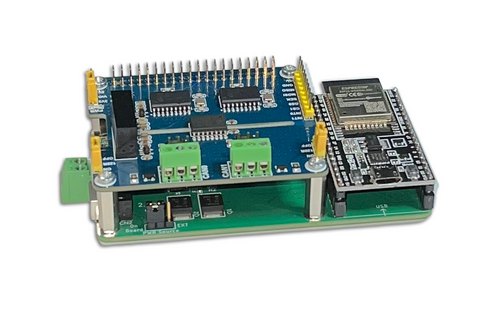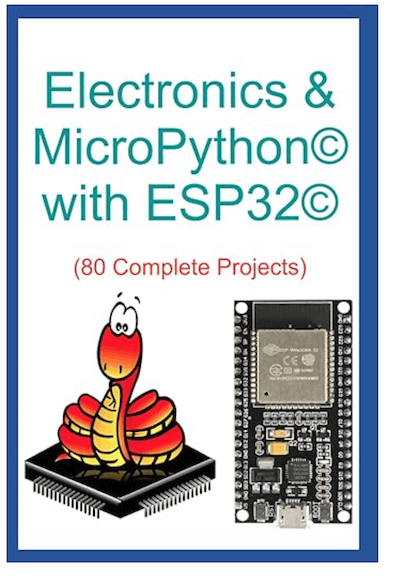Blog
Recent Posts
Introducing the ESP32 with Dual Isolated CAN Bus Port
Posted by on
 The ESP32 Development Board is renowned for its versatility, boasting features like Wi-Fi, Bluetooth, and ample processing power. When combined with the Dual Isolated CAN Bus HAT, it transforms into a formidable tool for CAN bus communication.
The ESP32 Development Board is renowned for its versatility, boasting features like Wi-Fi, Bluetooth, and ample processing power. When combined with the Dual Isolated CAN Bus HAT, it transforms into a formidable tool for CAN bus communication.
Key Features:
-
Dual CAN Channels: Facilitates simultaneous communication over two separate CAN networks.
-
Galvanic Isolation: Each CAN channel is electrically isolated, protecting the system from voltage spikes and ground loops.
-
Robust Protection: Equipped with TVS diodes for ESD protection and onboard digital isolators for signal integrity.
-
Flexible Power Options: Supports both 3.3V and 5V operating voltages, selectable via jumper settings.
-
Standard Compatibility: Designed to fit standard Raspberry Pi 40-pin GPIO headers, ensuring broad compatibility.
This setup is particularly beneficial for applications requiring reliable CAN communication in electrically noisy environments or where multiple CAN networks need to be managed concurrently.
Understanding the Dual Isolated CAN Bus HAT
At the heart of this setup lies the Dual Isolated CAN Bus HAT. It employs the MCP2515 CAN controller in conjunction with the SN65HVD230 CAN transceiver to manage CAN communication effectively. The integration of galvanic isolation ensures that each CAN channel operates independently, mitigating the risks associated with electrical interference and ground potential differences.
Technical Highlights:
-
MCP2515 CAN Controller: Handles the CAN protocol specifics, interfacing with the ESP32 via SPI.
-
SN65HVD230 Transceiver: Manages the physical layer, converting digital signals to differential CAN signals and vice versa.
-
Digital Isolators: Provide electrical separation between the ESP32 and the CAN transceivers, enhancing safety and signal integrity.
-
TVS Diodes: Protect against voltage transients and electrostatic discharge, common in industrial settings.
The HAT's design ensures that even in the presence of high-voltage transients or ground loops, the ESP32 and connected systems remain protected, maintaining reliable communication.
The Importance of Galvanic Isolation in CAN Bus Systems
Galvanic isolation refers to the separation of electrical circuits to prevent current flow; no direct conduction path is present. In CAN bus systems, this isolation is crucial for several reasons:
-
Protection Against Voltage Spikes: In industrial environments, voltage transients can occur due to switching inductive loads or lightning strikes. Isolation prevents these spikes from damaging sensitive components.
-
Elimination of Ground Loops: When multiple devices share a common ground, differences in ground potential can lead to circulating currents, causing communication errors or hardware damage. Isolation breaks this loop.
-
Enhanced Signal Integrity: By isolating the CAN transceivers, the system becomes less susceptible to electrical noise, ensuring cleaner signal transmission.
-
Safety Compliance: Many industrial standards require isolation to protect both equipment and personnel from electrical hazards.
In essence, galvanic isolation is not just a feature—it's a necessity for robust and safe CAN bus communication in demanding environments.
Applications and Use Cases
The combination of the ESP32 Development Board with the Dual Isolated CAN Bus HAT is ideal for:
-
Automotive Diagnostics: Safely interfacing with vehicle CAN networks for diagnostics and monitoring.
-
Industrial Automation: Managing communication between PLCs and sensors in noisy factory settings.
-
Energy Systems: Monitoring and controlling components in solar or wind energy installations.
-
Building Management: Integrating HVAC, lighting, and security systems over CAN networks.
In all these scenarios, the emphasis is on reliable communication, safety, and compliance with industry standards—all of which are addressed by this hardware combination.
Conclusion
As embedded systems continue to permeate various industries, the need for reliable and safe communication protocols becomes paramount. The ESP32 Development Board, when paired with the Dual Isolated CAN Bus HAT, offers a robust solution for CAN bus communication, addressing the challenges posed by electrical noise, voltage transients, and ground loops. Whether you're developing automotive diagnostic tools, industrial automation systems, or energy management solutions, this combination provides the reliability and safety your applications demand. More information...
References:
-
Copperhill Technologies: ESP32 Development Board with Dual Isolated CAN Bus HAT...
-
Texas Instruments: Top Design Questions About Isolated CAN Bus Design...
-
Electronics Stack Exchange: Should CAN bus in a vehicle be isolated?...
-
Copperhill Technologies Blog: Enhancing CAN Transceiver Isolation for Reliable Fieldbus Networks...
-
Copperhill Technologies Blog: ESP32 Application - Galvanically Isolated CAN Bus Repeater and Baud Rate Converter...
Got an ESP32® and not sure what to do with it?
This book is your ideal starting point! It provides a detailed introduction to both the hardware and software essentials needed to work with the ESP32® using MicroPython®. Whether you're learning for fun or developing practical applications, you’ll gain a solid foundation in programming and electronics. Step by step, you’ll explore how to write MicroPython® code, use pre-tested libraries, and work through hands-on examples to build and control your own exciting projects.
You’ll also dive into the fundamentals of analog and digital electronics—covering core concepts, components, ICs, sensors, actuators, and more. The book is packed with hundreds of diagrams, colorful illustrations, and clear explanations—all in English—to make learning both effective and enjoyable.
Curious about using Python® to build real-world projects but don’t know where to start?
This beginner-friendly guide will teach you MicroPython® from scratch. Learn how to structure programs, use essential commands, import external libraries, create custom functions, handle errors, and more. The focus is on simplicity, clarity, and fun—making it easy for anyone to start coding and building with confidence. More information...
Unlocking Next-Gen IoT and Industrial Automation with the ESP32 Development Board Featuring CAN FD and RTC HAT
In today's fast-paced world of embedded system design, developers face increasing pressure to deliver high-performance, reliable, and future-ready solutions for industrial and automotive applications. Whether you're building smart transportation systems, advanced robotics, or robust automation networks, one of the most important decisions you’ll make is choosing the right development hardware. The ESP32 Development Board with CAN [...]
Technical Comparison Report: ESP32 vs. Teensy 4 Series
Overview The ESP32 series, developed by Espressif Systems, and the Teensy 4 series, created by PJRC, are both highly capable microcontroller development platforms. ESP32 is well known for its integrated wireless capabilities, while the Teensy 4 series is recognized for its raw processing power and real-time performance. Processing Power The ESP32 series features dual-core Xtensa LX6, LX7, or [...]
Exploring the ESP32 Development Board: Features, Applications, and Integrations
The ESP32 is a powerful and versatile microcontroller widely used in embedded systems and IoT applications due to its dual-core processor, built-in Wi-Fi and Bluetooth capabilities, and extensive peripheral support. Various development boards have been designed to enhance the ESP32's functionality by integrating additional interfaces such as GPIO, CAN bus, and NMEA 2000/0183 protocols. This [...]
The ESP32 Processor and Programming MCP2515 and MCP2517/18 Per SPI Port
Introduction The ESP32 is a powerful, low-cost microcontroller developed by Espressif Systems, widely used in IoT applications. It features integrated Wi-Fi and Bluetooth, making it a popular choice for embedded systems. Among its various interfaces, the Serial Peripheral Interface (SPI) plays a crucial role in facilitating communication with peripherals such as sensors, displays, and external memory [...]
 Loading... Please wait...
Loading... Please wait...

